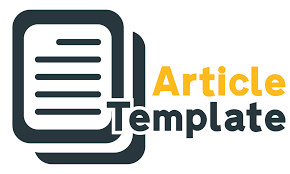Prinsip Suku Betawi Sebagai Inspirasi Utama Penciptaan Karya Tari Ngasosi
DOI:
https://doi.org/10.29408/tmmt.v6i2.24832Keywords:
Betawi principles, Ngasosi danceAbstract
A principle is something that is inherent and its truth is the basic principle for thinking and acting. The Ngasosi dance work is a new dance performance presented in pairs, which departs from the habits of Betawi people's lives. This research was carried out using qualitative methods, namely by explaining in detail the inspirational ideas and forms of presentation with a background of creativity carried out by choreographers in developing traditional Betawi dance, as well as expanding character education. This research uses primary and secondary data sources. The primary data source is interview notes, the researcher's secondary data source was obtained through literature studies in the form of books, scientific journals that support research, and photo documentation of variations in dance movements, fashion, make-up, props and musical scores. The resulting understanding is that this dance depicts a father and son who carry out the principles of life of the Betawi people, namely the Koran, prayer, silat which are applied in everyday life, where the principles of life of the Betawi people must be remembered from an early age until adulthood so that they become good habits and obligations. which has always been passed down from generation to generation.
References
Bertens, K. (2014). Sejarah Filsafat Kontemporer Perancis. Jakarta: Gramedia Pustaka Utama.
Djelantik, M.A.A. (1999). Estetika Sebuah Pengantar. Bandung: Masyarakat Seni Pertunjukan Indonesia.
Indrayuda. (2013), Tari Sebagai Budaya Dan Pengetahuan. Padang: UNP Press.
Hawkins, Alma. (1990). Mencipta Lewat Tari (creating trough dance). Yogyakarta: Institut Seni Indonesia.
Murgiyanto, Sal. (1983). Koreografi Pengetahuan Dasar Komposisi Tari. Jakarta:
Departemen Pendidikan dan Kebudayaan.
______________ . (1986). Pengetahuan Elementer Tari dan Beberapa Masalah Tari. Jakarta: Direktorat Kesenian.
______________ . (1977). Pedoman Dasar Penata Tari. Jakarta: Institut Kesenian Jakarta.
Nugrahani, F., & Hum, M. (2014). Metode penelitian kualitatif. Solo: Cakra Books.
Smith, J. (1985). Komposisi Tari Sebuah Petunjuk Praktis Bagi Guru. Yogyakarta: Ikalasti Yogyakarta
Soedarsono. R.M. (1978). Pengantar Pengetahuan Tari dan Komposisi Tari. Yogyakarta: Akademik Seni Tari Yogyakarta.
Sudiasa, Ida Bagus, Ketut. (2002), Bahan Ajar Komposisi Tari. Bali: CV. TINTA EMASPERKASA.
Downloads
Published
Issue
Section
License
Copyright (c) 2024 Aryati Dewi Kusumaningtyas

This work is licensed under a Creative Commons Attribution-ShareAlike 4.0 International License.
All writings in this journal are the full responsibility of the author. Tamumatra : Jurnal Seni Pertunjukan provides open access to benefit anyone with valuable information and findings. Tamumatra : Jurnal Seni Pertunjukan can be accessed free of charge at no cost, following the creative commons license. Authors who publish articles in the Tamumatra : Jurnal Seni Pertunjukan must comply with the following conditions:
The author retains the copyright and grants the right of first publication with the work licensed simultaneously under the Creative Commons Attribution-ShareAlike 4.0 International (CC BY-SA 4.0) license, allowing others to share the work with an acknowledgment of the work's authorship and initial publication in this journal.
Authors may make additional separate contractual arrangements for the non-exclusive distribution of the published journal version of the work (for example, posting it to an institution or publishing it in a book), acknowledging its initial publication in this journal.
Authors are permitted and encouraged to post their work online (for example, on institutional repositories or websites) before and during the submission process, resulting in a productive exchange and earlier and more extensive citations of the published work.
All articles in this journal are the sole responsibility of the author. Tamumatra : Jurnal Seni Pertunjukan provides open access to benefit anyone with valuable information and findings. Tamumatra : Jurnal Seni Pertunjukan can be accessed and downloaded for free, following the creative commons license.

Tamumatra : Jurnal Seni Pertunjukan is licensed under a Creative Commons Attribution-ShareAlike 4.0 International License







